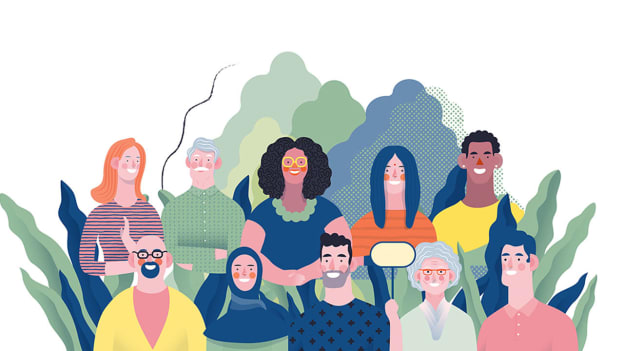Changing D&I trends in the post-pandemic workplace

In history, only a few events had the power to pause the world. While some can be classified as sectoral or temporary disruptions, the COVID-19 crisis has forced major changes upon the world.
The year 2020 has been a major one for Diversity, Equality and Inclusion (DE&I). As we scroll through 2021, it is agreed that strategies and efforts for diversity and inclusion will play a critical role in the way we do business, attract talent and grow brands. When it comes to how the business is perceived, few factors play a major role in the mission of the organization to define a culture of justice, opportunity and compassion for all. This not only applies to how you recruit employees, but this is equally relevant for how you pay them, structure and handle benefits to achieve both personal ambitions and the company's goals.
New world is redefining diversity and inclusion, as we know it
Diversity goes beyond genders and generation
An analysis by Mckinsey indicates firms that are more diverse are more profitable, more productive, more competitive, and give better results to shareholders. In the simplest words, diversity is the difference in thinking, the difference in interpretation, the difference in experience, and the difference in effects. Therefore, to begin with, companies now have to search for strengthening cognitive diversity.
When people come together from varying educational and work backgrounds, they bring diverse perspectives and experiences to the table. Leveraging this diversity of thought and approaches to problem solving is a key ingredient to innovative solutions, and consequently for businesses to stay ahead of the curve.
High Tech with High Touch
The impetus on highly scalable, technologically driven HR processes; has ensured a standard employee experience. Increased automation and the presence of bots and machines, have made people processes robust and efficient. However, we need to ensure that the ‘human touch’ or tailored experiences to address diverse motivators of each talent are not lost.
Talent leaders will have to consider all these potential developments of the future of work and build strategies and initiatives that are efficient but more importantly effective and inclusive for all.
Inclusion is no longer a mandate, it’s an opportunity
Instead of mandate, we should consider inclusion as an opportunity to on-board talent without any boundaries and limitations-cross- geography, cross domain, multi-generational and across genders. Democratization of competence and merit can give access to top talent and offer a competitive advantage. As more organizations recognize the advantages of being more inclusive, talent arbitration would also be generated in unexpected ways. By moving to Tier 2 - Tier 3 cities, by attracting women who are on a break, by not segregating talent depending on their personal preferences, companies can gain access to the talent that they have not been recruiting.
How is diversity and inclusion reshaping the workplace?
Flexible work policies
Maximizing efficiency of employees could mean working fewer hours and staying away from the office. Sounds strange? Most companies across the globe, from Telstra to Westpac, don't think so. They encourage employees to work from home and set up their own working hours. Flexible work arrangements allow employees flexibility over where, when, and how they work. A comprehensive study finds that workplaces that offer work flexibility are more productive and more inclusive.
Flexible work policies don't mean not meeting deadlines or slacking off. Instead, it facilitates an employee to pick their work hours, location, and working environment where they can be more productive. As per a recent report, 55% of employees stated the flexibility of work-life balance is a huge aspect of their job satisfaction. [2]
Roles will be redefined and redesigned
In order to be productive and competitive in the future of work, role restructuring is necessary for employees. Work may no longer be limited to a single role or a function in an organization. It will continue to grow from one project to another. The emergence of agile teams working on cross-domain business imperative projects results in creative problem solving cross-functionally.
Leadership will take centre stage
The success and failure of DE&I efforts lie on the shoulders of leadership. The Boston Consulting Group study reveals that firms with more diverse leadership teams had around 19 percent higher revenue because of innovation.
Most companies need to work on building diverse leadership pipelines. It is easier to achieve diversity and inclusion when employees can see it reflected at the organization's highest levels, where leaders have a more open mindset in terms of respecting diverse thoughts, working experiences, personalities, and backgrounds. If 2021 is set to be the year of inclusiveness, a huge part of it is going to be setting up a diverse leadership team.
A topic like diversity and inclusion might not have had recognition and relevance in the past, but in the present, it is fueling a lot of conversation, perspectives and research about our world and people around us. Understanding the importance of global empathy, cultural intelligence, community building and cooperation; is critical to effectively translate our business strategy into an impactful people strategy and to inspire diversity of skills, thought, & expertise. This will lead companies to achieve their strategic goals and position themselves to bridge the gap between where they are and where they want to be.
















